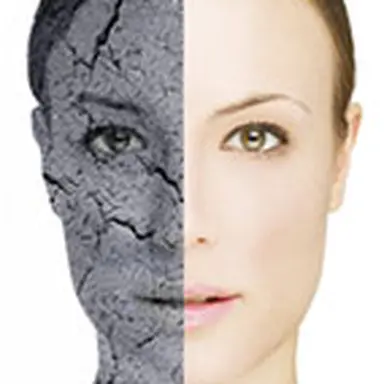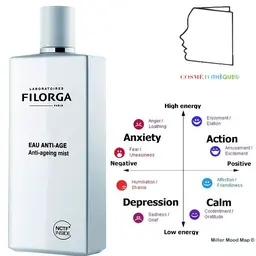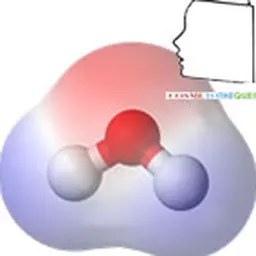
Here is a short history of hydration, seen from the formulator's point of view through the ingredients (taken from a lecture by Jean Claude Le Joliff at the Société Francophone d'Ingénierie et d'Imagerie Cutanée (SF2iC) - Paris 24/10/2013). The claim"moisturizing cream" is probably one of the oldest claims in the world of beauty. And in 2012, two thirds of skin care products posted claims related to hydration…
In 1904, Guerlain already offered a moisturizing cream with the texture of"whipped cream" and a light violet scent. This product was called"Secret bonne femme" and was still on sale at the end of the 20th century. Even today, according to market research firm Mintel, worsening weather and stress conditions that disrupt consumer skin care routines mean that products with hydration claims have never been in greater demand. In the United States, more than half of consumers purchase face care products to treat or prevent dry skin syndrome. This percentage rises to 56% in Great Britain, nearly 40% in France and 48% in Germany.
Is it still useful to remember that the notion of hydration does not imply bringing water into the skin, but consists exactly in its opposite, namely preventing this water from coming out of the skin? This physiological process is known as PIE, for insensitive water loss, or insensitive perspiration, and refers to the idea that there is a permanent water flow through the skin. Indeed, when we know that skin hydration is linked to the barrier function of the stratum corneum, that this complex barrier function is itself the result of a set of biochemical processes that are still the subject of discoveries and advances, we can conceive that moisturizing products can be extremely diverse in their chemical composition and act through sometimes different and variable mechanisms (cf. Cosmetology active ingredients and additives (3rd ed.:) , Marie-Claude Martini, ed. Lavoisier). The approach is mainly to interfere with insensitive water loss, and this in different ways, but essentially with ingredients.
Over time many approaches have been proposed, a brief overview is needed.
Formulators first used the"occlusion" process to try to slow the insensitive water loss. The occlusive process comes from the radical occlusion with the suffix -if and which means: q ui occluded, clogged, clogged . In this approach, we try to greatly reduce the flow of water through the skin through occlusive fatty substances that are applied to the surface of the skin. The products thus obtained were very greasy in nature, mainly balms and ointments, which gradually evolved towards slightly less thick textures, one of the main representatives of which is cold cream (W/O or W/O emulsion type formula). The"active ingredients" were simple: they were occlusive fats, often referred to as hydrophobic filmogens. These are hydrocarbons like petroleum jelly, paraffin or petroleum jelly oils, natural fats like lanolin, various butters, certain vegetable oils. From this time come the moisturizing properties often put forward for vegetable oils. Also note the use of special formulas, known as"absorption bases, or"cholesterol vaseline" or lanovaseline (cf. Preparation: instructions for use (pharmacy, subcontracting and BP) Catherine Mautrait, Robert Raoult, Wolters Kluwer France) composed of mixtures of hydrocarbons and lanolin alcohols, often rich in sterols, or even using cholesterol, these mixtures having a strong affinity for water.
Since the fatty nature of these preparations sometimes makes them uncomfortable and unsightly, the formulators then resorted to another group of substances that we will globally refer to as"the humectants" . These are hydrophilic substances with a strong affinity for water, slightly less good with stratum corneum proteins. These were often technological ingredients that prevented the doughy preparations from drying out. They were proposed largely for that reason. The active ingredients were initially as simple as natural polyalcohols (glycerin, sorbitol), then synthetic glycols such as propylene glycol, butylene glycol, or different types of polyethylene glycols were gradually used. This also corresponded to the appearance of creams much less rich, much more pleasant, associated strongly with the creams called"stearate cream".
In the early 1970s, the NMF concept appeared. This concept is initially based on the idea that water treatment of stratum corneum can extract a water-soluble fraction that is just as responsible for fixing the hydration rate as sebum. This fraction has been called NMF for Natural Moisturizing Factors. Numerous studies will lead to the identification of the composition of this water extractable faction. The characterisation of its composition will reveal several more or less characteristic substances such as urea, amino acids, mineral salts, as well as a substance considered as specific, PCA for Pyrrolidone Carboxylic acid or pyroglutamic acid, also called 5-oxoproline and pidolic acid.
This substance, resulting from the degradation of fillagrine ( late differentiation marker which occurs during the epidermal maturation process) during keratinocyte differentiation, is a marker of NMF. All this will lead to the development of many specialties based on NMF substitutes, i.e. mixtures incorporating all or part of the ingredients found in the composition of this fraction. Many products on this basis will see the light of day.
Then, the use of hydrophilic substances will be based on film-forming substances, promoting the formation of hydrophilic films on the surface of the skin allowing the more or less specific fixation of water. The main representative of these substances is without discussion hyaluronic acid, or different types of natural polysaccharides, carrageenates, alginates or mucilages, more recently Exopolysaccharides, or cationic derivatives of hydrophilic polymers such as cellulose. These polymers often have the advantage of being able to exert a substantive effect by selectively binding to proteins on the skin surface, thus prolonging the immediate action of the product.
This approach was then supplemented in the 1990s by the characterization of the stratum corneum structure, and in particular by the work of Peter Elias This article shows the role of the constituents of inter-corneocyte cement in which ceramides play a predominant role. These lipidic substances, produced during the epidermal maturation process (Odland corpuscles), have a very interesting role. The molecular structure of these compounds has a polar head (sphingosine) linked to a long hydrophobic chain, giving them the ability to form ordered structures in bilayers. The intercellular spaces are made up of lipid bilayers very rich in ceramides and thus reduce permeability to water and solutions. The idea of compensating by adding exogenous ceramides incorporated in creams was quickly imposed. Seven classes of ceramides have been isolated from the human epidermis and differ from each other in their greater or lesser polarity.
This concept will be referred to as"epidermal lipids", i.e. based on the idea of using substances similar to those present in the skin. Initially, these will be extracts, first of all medullary tissues, an origin very quickly abandoned in favour of substances of vegetable origin, wheat ceramides in particular. Synthetic ceramides, hemi-ceramides or pseudoceramides, will also be offered rapidly by the industry, allowing a wider, more specific choice, constant quality and a more affordable shot. This concept of epidermal lipids will later be supplemented by the use of ceramide precursors, such as phytosphingosine, whose role as promoter of native ceramides has been shown.
The interest of certain essential fatty acids will be reaffirmed at this level. Indeed, several studies show that omega-6 is likely to combine with native ceramides to form more complex patterns called acyl ceramides The cement is a basic component of inter-corneocyte cement, thus promoting an effective barrier function.
Finally, this approach, based on lipid systems, will be complemented by lipid systems organized in the form of ready-to-formulate bilayers, allowing a more or less specific structure to be reproduced on the skin surface to control these hydration levels (DuraQuench™ - Croda).
Finally, all substances contributing to a epidermogenesis The ability to improve terminal differentiation to improve stratum corneum structure. These substances are numerous, ranging from allantoin to specific growth factors, including biostimulating agents of various and varied natures. It is by stimulating epidermal renewal that alpha-hydroxy acids (lactic acid, for example) or beta-hydroxy acids (salicylic acid) also contribute to improving the hydration process, or, to a lesser degree, urea.
A new concept will be proposed in the early 2000s following the work of Peter Agre (American biologist, co-winner of the 2003 Nobel Prize in Chemistry). This is the concept of Aquaporins . Aquaporins (AQP) are a class of membrane proteins that form"pores" permeable to water molecules in biological membranes. Aquaporins allow water to pass through both sides of the membrane, while preventing ions from entering the cell. In 2009, about 500 aquaporins had been discovered, both in the plant and animal kingdom, including 13 in humans. The use of substances regulating the production of aquaporins in the skin has naturally become essential, for the regulation or maintenance of skin homeostasis and hydration in particular. Many substances have been proposed, either of bio-synthetic origin or from specific plant extracts (Aminoporine™ AMI). Aquaporin 3 (AQP3), or aquaglyceroporin, was the main biological target initially studied. From original works were also interested in aquaporin 8 (AQP8) or amonioporin, this substance being supposed to regulate the flow of urea in the skin and thus have an impact on the skin's ability to fix water.
Another group of substances finds its use in these applications. These are the osmolytes . Osmolytes are small molecules soluble in intracellular solution, found in several species, and play a role in combating environmental stress in living organisms. They make it possible to balance the osmotic pressure of the various tissue compartments. They can be subdivided into categories: - small carbohydrates, mainly sugars such as trehalose, glycerol, inositol, sorbitol, etc.., - amino acids: glycines, promised 1, taurine, etc…, - methylamines: glycine betaine, etc.
The use of these substances can regulate the PIE.
In more recent approaches, the genomic has helped to develop new paths. This involves intervening on the genes involved in the hydration process (Revidrate™ Sederma), by promoting the production of substances linked to the maintenance of hydration, such as hydration factors or fillagrine for example, or specific proteins. It also involves interfering with the production of certain enzymes such as fillagrinase, which promotes the appearance of PCA, or terminal differentiation markers such as caspase 14, which promote the formation of a quality stratum corneum.
So there are many ways to look at the central process of skin hydration. Establishing a hierarchy between these different approaches is complicated and would not be of much interest. It is often the galenic aspect that will lead to the use of a given type of substance, the mode of action sought being more or less specific.
These different aspects will be taken up in a series of complementary articles describing more specifically the nature of the ingredients, the manufacturing methods, as well as the modes of action. The first will deal with the BCP. A more general contribution on hydration measurement will also be proposed to complete this overview, as these means are one of the main drivers of innovation in this field of application.
◊♦◊♦◊♦◊♦◊♦◊♦◊♦◊♦
A little history
The mention" hydration by impregnation of the superficial layers of the epidermis" has long appeared on the packaging of some products claiming hydration. This French-French provision continues to challenge some. Its origin is somewhat lost in the limbo of regulation. Having interviewed several specialists, its initial publication is uncertain. According to some experts, it must have appeared during the 1980s, at a time when superfluous claims were already in order. The French administration, in a concern for truth vis-à-vis the consumer, asked that the mode of action be specified. Among several options, this mention quickly became established, and this is how it began to appear on labels. It still appears in the BVP (now ARPP) Hygiene and Beauty Recommendations dated October 1998. The reference"hydration of the upper layers of the epidermis" is no longer mandatory. It was highly recommended by the DGCCRF, but this is no longer the case today. Thus, the ARPP Cosmetic Products Code addresses the term"Hydration". It reads: ``O n hydrating product means products intended to improve or maintain the water balance of the epidermis. A cosmetic product may not be presented as capable of deeply moisturising or rehydrating the skin". Hydration is therefore not linked to a specific type of ingredient, but applies to all products claiming this property.
| Contribution made by Jean Claude Le Joliff A biologist by training, Jean Claude Le Joliff was a man of R&D for many years. Successively in charge of R&D, then of Research and Innovation in a large French cosmetics and luxury group, and after an experience of creating a research centre (CERIES), he turned to innovation management. He is the founder of inn2c, an R&D and Innovation consulting company. Consultant to several international companies, he has actively participated in projects such as Filorga, Aïny, Fareva, and many others. He created the Cosmétothèque®, the industry's first conservatory of crafts and know-how. |












